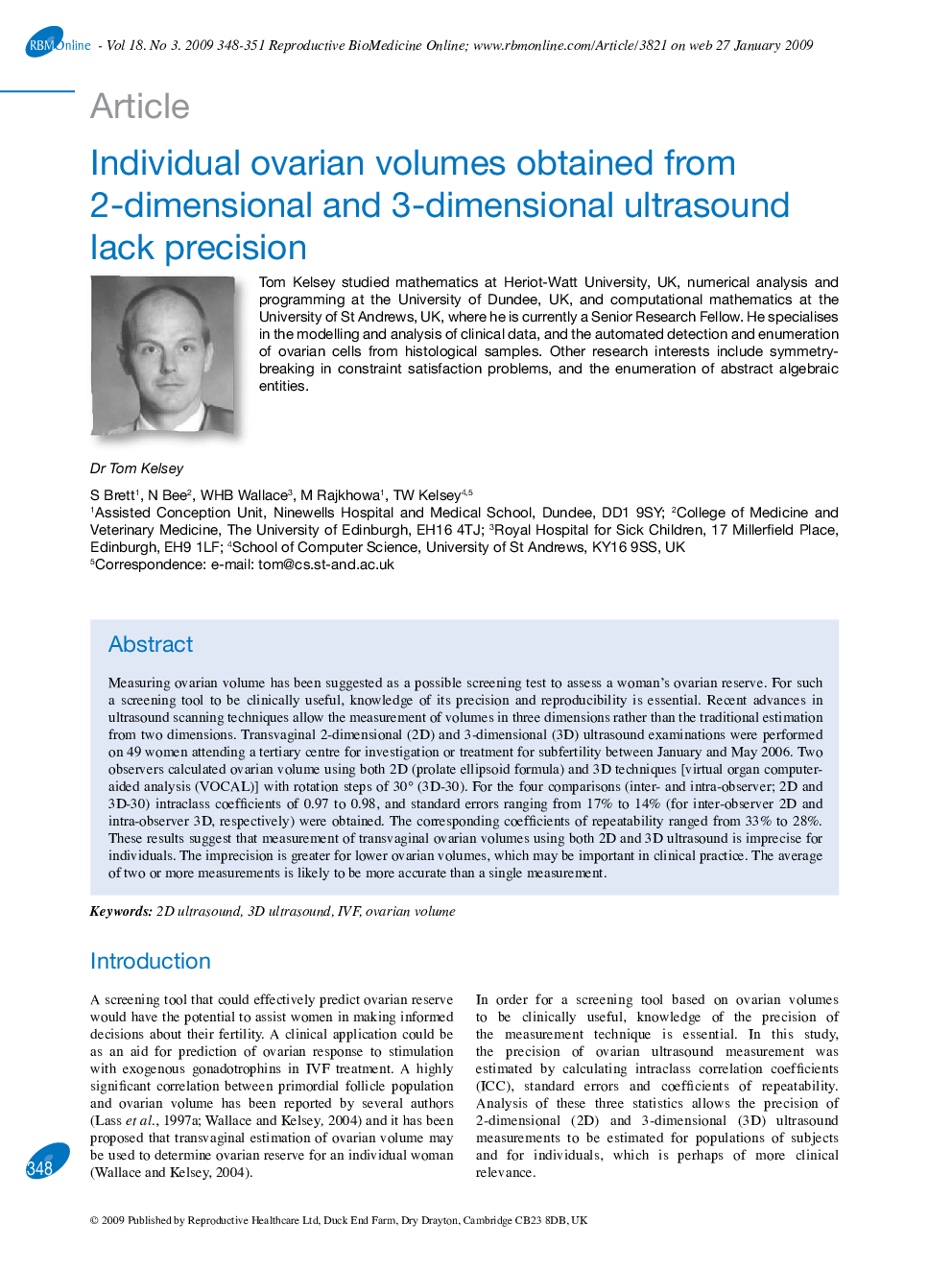| Article ID | Journal | Published Year | Pages | File Type |
|---|---|---|---|---|
| 3972019 | Reproductive BioMedicine Online | 2009 | 4 Pages |
Measuring ovarian volume has been suggested as a possible screening test to assess a woman's ovarian reserve. For such a screening tool to be clinically useful, knowledge of its precision and reproducibility is essential. Recent advances in ultrasound scanning techniques allow the measurement of volumes in three dimensions rather than the traditional estimation from two dimensions. Transvaginal 2-dimensional (2D) and 3-dimensional (3D) ultrasound examinations were performed on 49 women attending a tertiary centre for investigation or treatment for subfertility between January and May 2006. Two observers calculated ovarian volume using both 2D (prolate ellipsoid formula) and 3D techniques [virtual organ computer-aided analysis (VOCAL)] with rotation steps of 30° (3D-30). For the four comparisons (inter- and intra-observer; 2D and 3D-30) intraclass coefficients of 0.97 to 0.98, and standard errors ranging from 17% to 14% (for inter-observer 2D and intra-observer 3D, respectively) were obtained. The corresponding coefficients of repeatability ranged from 33% to 28%. These results suggest that measurement of transvaginal ovarian volumes using both 2D and 3D ultrasound is imprecise for individuals. The imprecision is greater for lower ovarian volumes, which may be important in clinical practice. The average of two or more measurements is likely to be more accurate than a single measurement.
